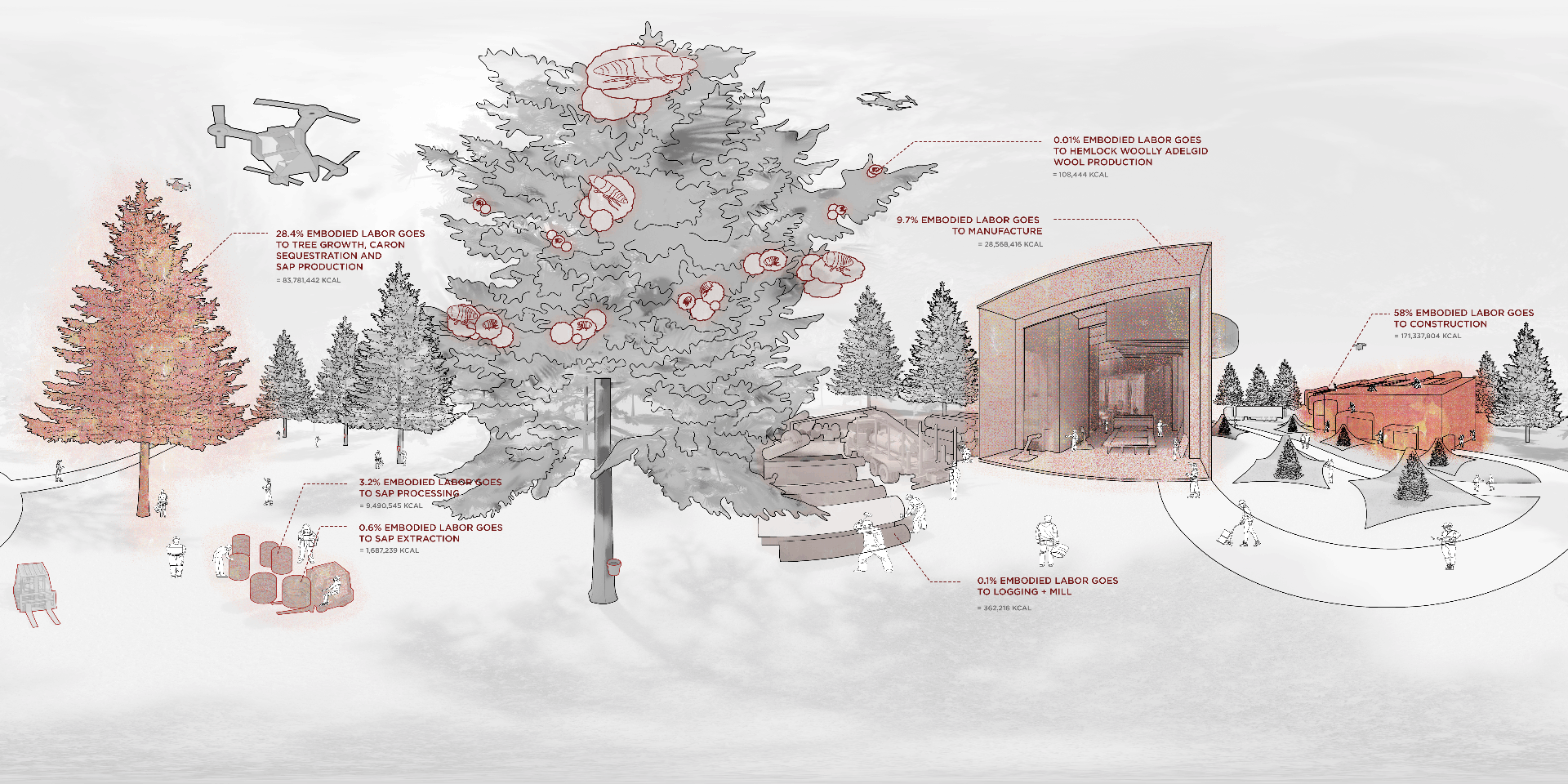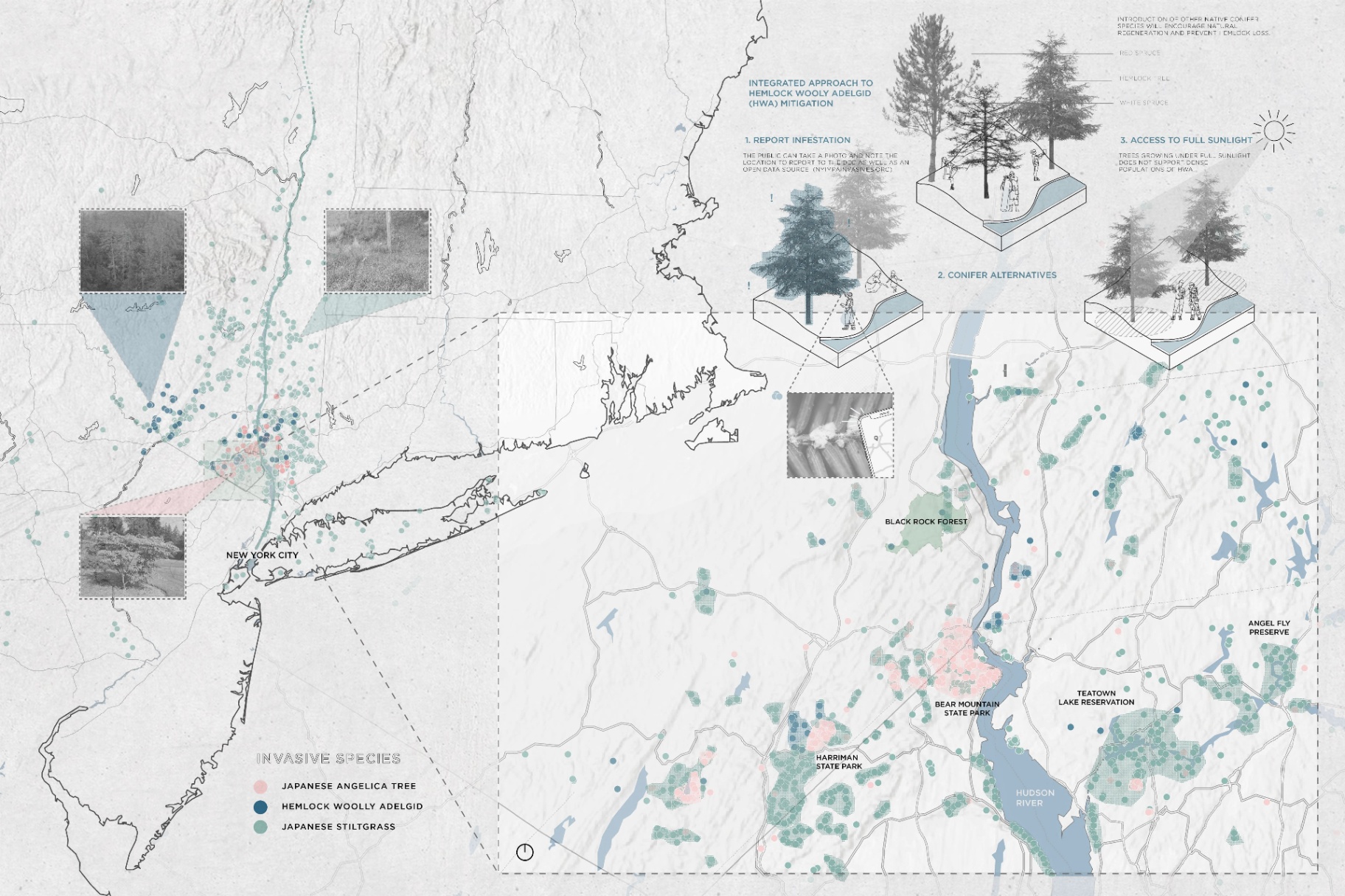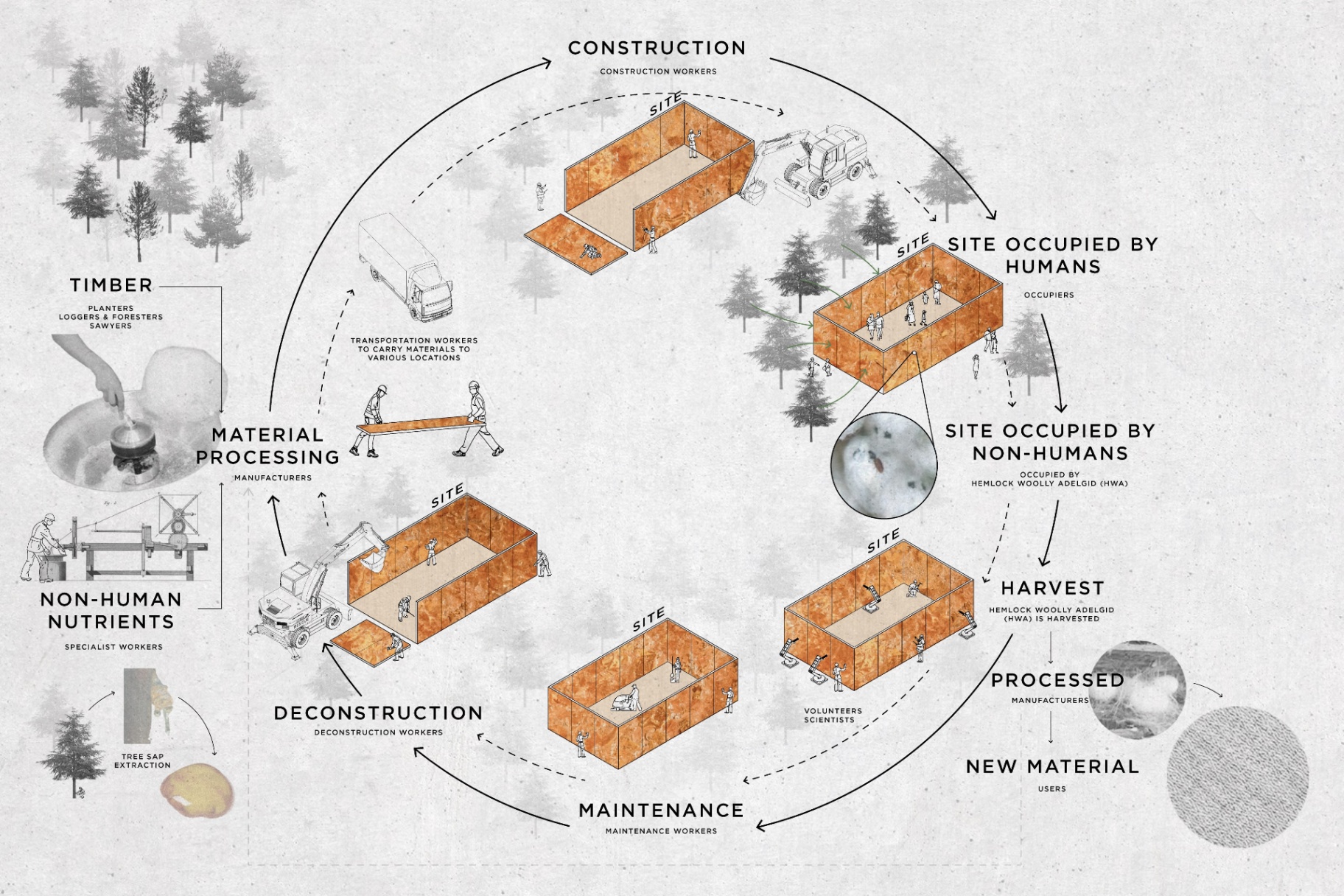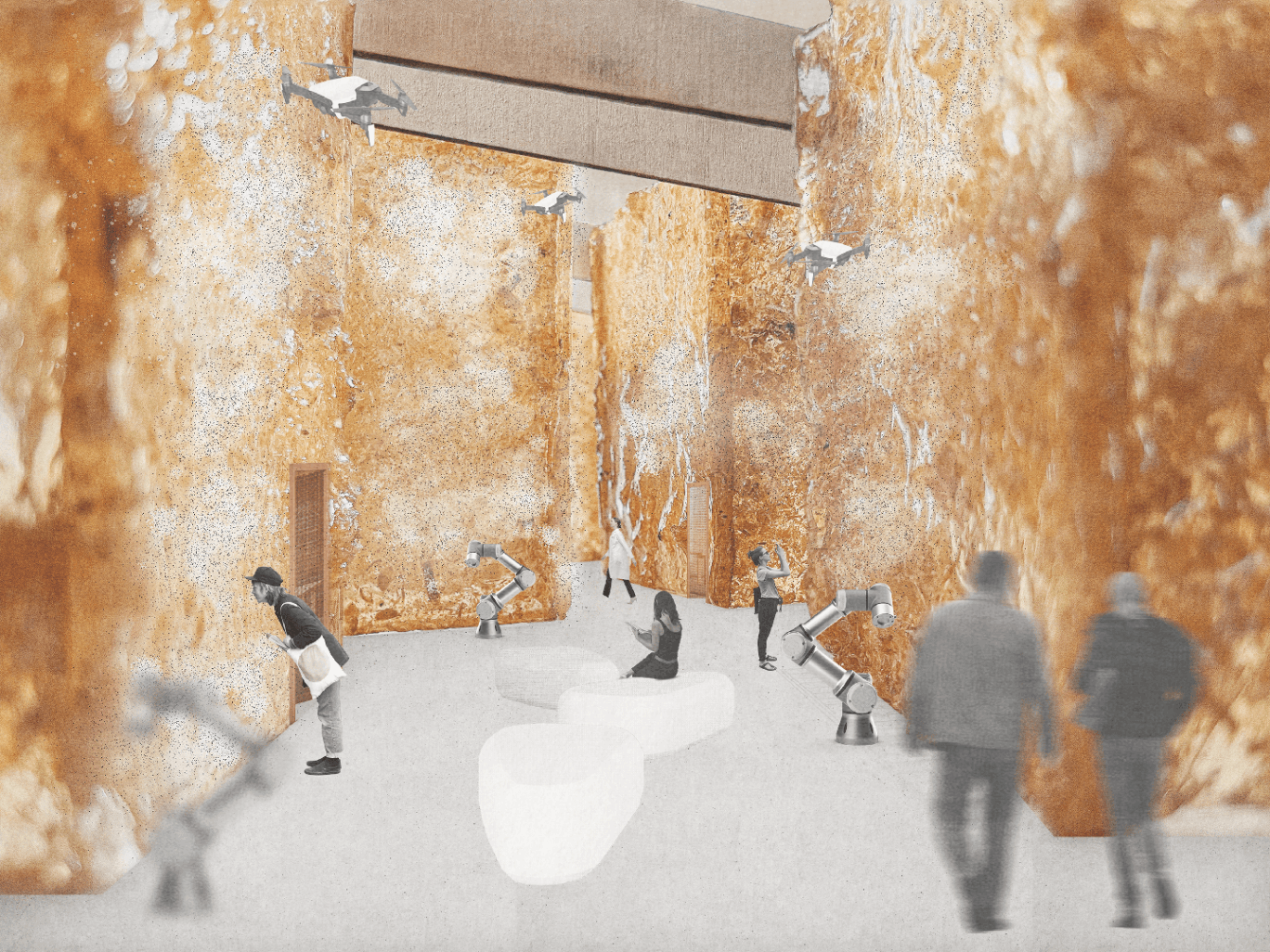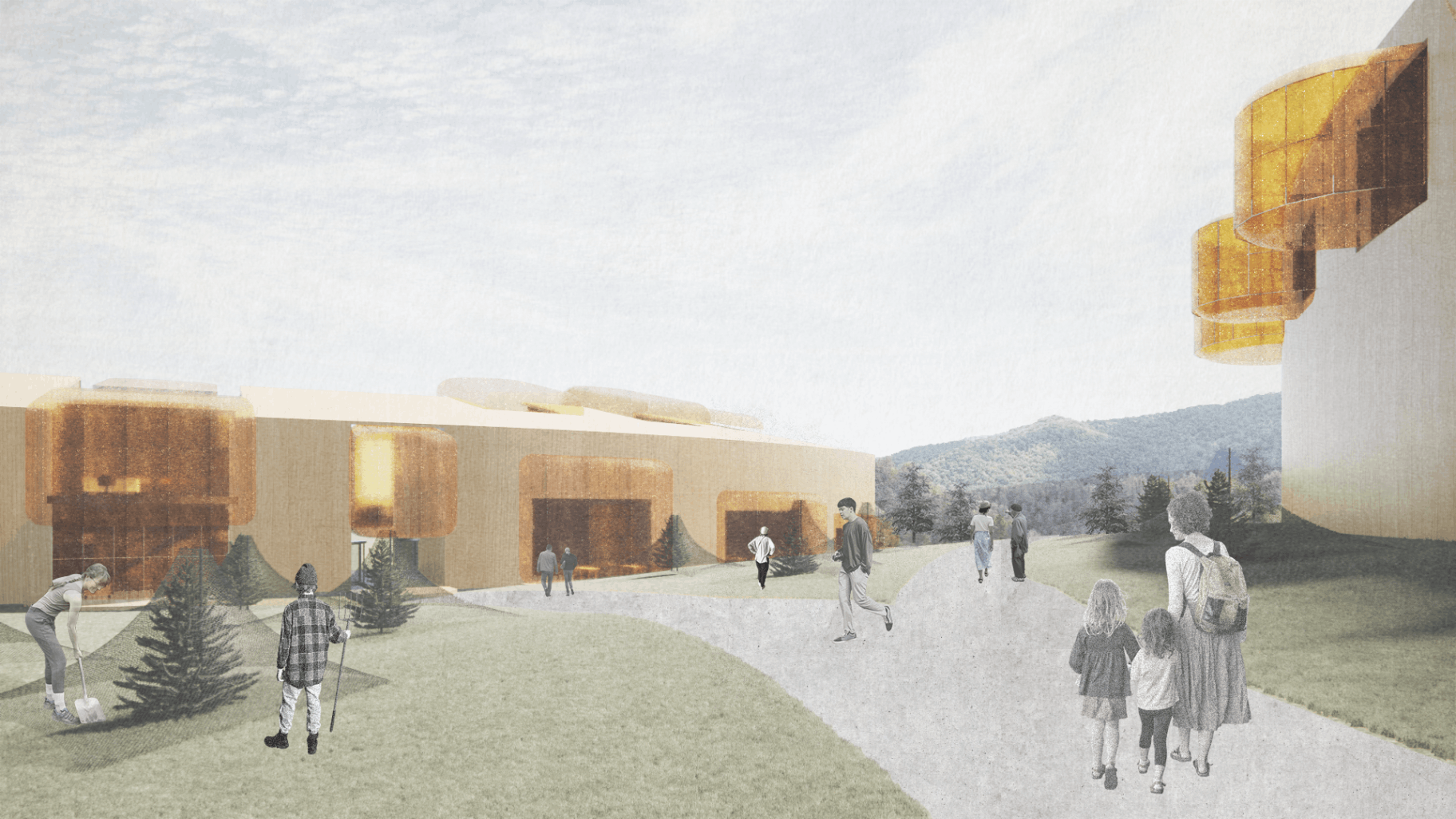Back
Sap Lab
Year: 2022
Category: Healthcare Architecture
Skills: Rhino, Photoshop, Enscape
Invasive species have become a pressing global issue, with an estimated $120 billion in economic losses annually from their impacts. In the United States, invasive species are responsible for the loss of more than 220,000 jobs and the cost of $8.8 billion in damages each year. One of the most serious invasive species problems is the Hemlock Woolly Adelgid, which has been rapidly spreading across the eastern United States and is threatening the survival of the Eastern Hemlock tree population. The Hemlock Woolly Adelgid is a sap-sucking insect that feeds on the tree’s sap, causing the tree to die. To combat this issue, the proposal reimagines the integration of invasive species (Hemlock Woolly Adelgid) into the project’s infrastructure as a means to preserve the native Eastern Hemlock trees population. The proposal consists of two components: a Hemlock Woolly Adelgid research lab and a CLT factory. How can humans collaborate with other species to form new structures without depleting the earth’s natural resources?
The project incorporates the labor of humans and non-humans (including the Hemlock trees and Hemlock Woolly Adelgid) into its construction. The drawing measures the embodied labor of humans and non-humans (including the Hemlock trees and Hemlock Woolly Adelgid) that go into the construction of the project.
Invasive species are a major problem in the United States, and in particular in New York State. This image shows the affected zones of invasive species, particularly, Japanese Angelica Trees, Japanese stiltgrass, and the Hemlock Woolly Adelgid. This analysis determines the appropriate site for the project as well as highlights the dire situation of the spread of the Hemlock Woolly Adelgid.
The project’s system begins with timber and tree sap being extracted to be processed into a new material within the site. From then it can be transported and constructed to be occupied by humans and non-humans. Through automation the invasive can be drawn out from the forest’s hemlocks and placed onto wall systems that contain the tree sap nutrients for HWA to feed on. Throughout the HWA life cycle, its wool production can be harvested and processed into a new wool material. By designing the framework for humans to confront and collaborate with HWA, opportunities for new models of pest treatment can arise such as forming new materials through HWA wool coatings. The project is able to evolve over time through the introduction of the HWA and their feeding and wool production behavior, allowing the HWA to participate in the building process. Inevitably, after the invasive area is mitigated the structure can be deconstructed for relocation to other affected areas.
By studying the behavior of invasive species (HWA), this informs how the project can utilize the species to benefit the forest’s ecosystem. Following the principles of a circular economy in wood manufacturing, the project acts as a network between human and the natural environment to further adapt ourselves to the inevitable climate emergency future. How are we able to follow similar models such as silk manufacturing to further collaborate with other species?
Megan Dang
More by Megan Dang
View profile